How to Add Videos to WordPress (And Why)

Do you find it easy to add videos to your WordPress site? If you shouted YES, you wouldn’t be here, now would you?
Another related question: Is creating or finding the best videos for your WordPress site easy? That’s right, I didn’t think so. You probably don’t even know where to start, but don’t sweat it; you aren’t alone.
As a beginner, adding videos to your WordPress posts and pages might seem intimidating at first, but nothing could be further from the truth. Turns out you can add videos to your WordPress site like a pro, and in this post, we show you exactly how. Get your mug ready and let’s set the mood with some video stats.
Some Video Stats…
With video being such a hassle, why bother adding videos to your website in the first place? I mean, you would think high-quality text and image content is enough, right?
After all, you’ve heard experts chirp away that you can optimize images and text for SEO, and score top positions in search engines. Been there and done that, so I can assure you it works. Nothing new there.
So, why should you include video in your WordPress marketing arsenal? The following stats will help you to make an informed decision.
- People watch over 5 billion videos on YouTube per day
- Users watch over 100 million hours of video on Facebook per day
- 82% of Twitter users watch videos on the platform
- The average internet user spends 88% more time on a website with video
- 70% of marketing professionals are actively optimizing video for SEO
- A good 43% of marketers agreed they would create more video content if there were no obstacles such as budget, resources and time
- 65% of viewers watch more than 3/4 of a video
- 9 out of 10 viewers said that product videos are useful in the decision process
- Adding video to email marketing increases click-through rates by 300%
- Including video on a landing page can increase conversion rates by 80%
- 64% of shoppers are more likely to buy a product on your website after watching a video
Source: Renderforest infographic with 40+ stats from various reputable sources.
Clearly, the above statistics paint a great picture of the future of video marketing. The data also shows that there has never been a better time to incorporate video into your website marketing strategy. And if stats don’t mean jack to you, perhaps the following list of benefits will seal the deal.
Benefits of Video Marketing
If you’re not the nerdy type, stats will hardly move you. To counter, here is a quick list of the benefits you will enjoy when you include video in your marketing strategy.
Video can:
- Increase brand awareness tenfold. A good example of how you can use video to increase brand awareness is the Dollar Shave Club YouTube video, which prompted 12,000 orders within two days. Four years down the line, Unilever bought Dollar Shave Club for a reported $1 billion in cash. Say wh-a-a-at?
- Help you reach more users. YouTube and many social media websites promote video content actively, allowing you to reach more users. Video can help you to build a targeted audience that benefits your business website now and in the future.
- Provide clearer product or service demonstrations, which result in more purchases
- Improve your search rankings, since you’re more than 50 times more likely to rank on the first page of Google if you add an optimized video to your website
- Offer you a better return on investment (ROI)
- Build emotional connection and trust, since videos have the innate ability to evoke emotions provided you do your work
- Lead to more conversions
- Complement the rest of your content allowing you to provide a rich user experience on your WordPress site
Without a doubt, videos will only continue to grow in terms of efficacy and penetration as a marketing medium. That said, it’s important to focus on the latest video trends to stay ahead of the competition, which – unfortunately – is stiff.
Where does all of this leave you? Still stuck, yes?
Well the first step in leveraging the power of video is learning how to add videos to your WordPress website. How else will you enjoy the benefits of WordPress videos if you cannot add them to your site?
Read on to discover how you can easily add videos to your WordPress site without spending a dime on developers or plugins.
How to Add Videos to WordPress Manually
You don’t need a plugin to add videos to your WordPress site. WordPress, being the amazing platform it is, comes with nifty video integration features that make the whole process as easy as A, B, C.
Get to the point Freddy… Okay, I hear you 🙂
Assuming you’ve already uploaded your videos to YouTube (or perhaps you’re sharing videos from another creator), navigate to the video you’d like to add to your WordPress site.
Copy the link in the browser address bar as shown below.
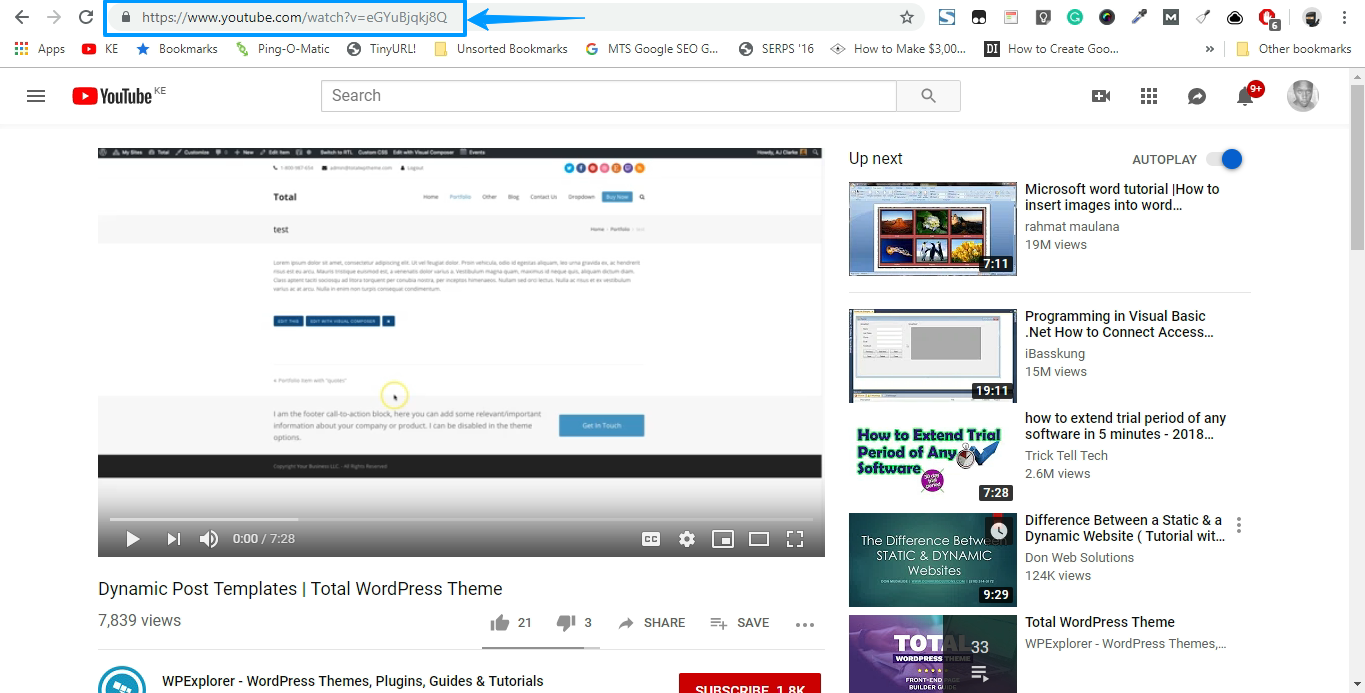
Alternatively, you can right-click on the video and click Copy Video URL as we highlight in the screenshot below.

Now, you have a link that looks something like this:
https://youtu.be/eGYuBjqkj8Q
Next, navigate to the page or post where you’d like to add the video. If you’re creating a new page, simply navigate to Pages > Add New on your WordPress admin menu as shown below.
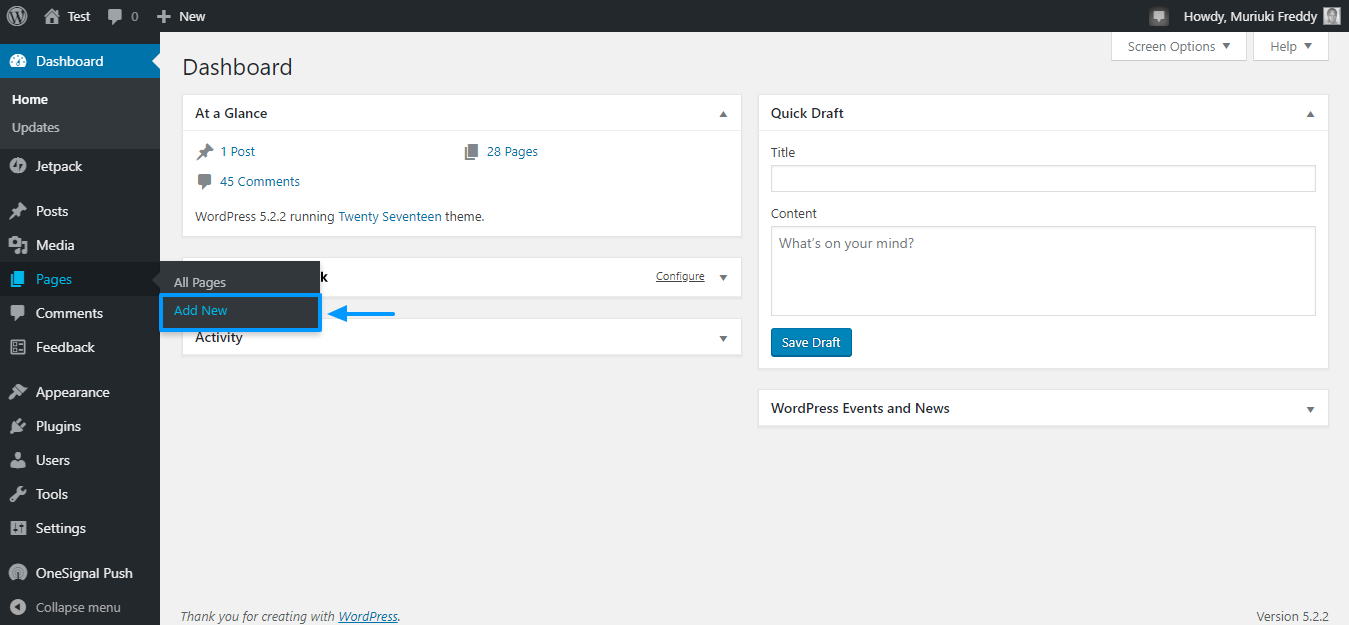
Note: If you are adding the video to a post, you’d need to navigate to Posts > Add New in the step above.
Once the page editor loads, add the usual stuff i.e., your page title, content, tags, categories, SEO and so on. We have populated our editor with dummy content as shown below. Note, also, that I am using the Gutenberg editor.
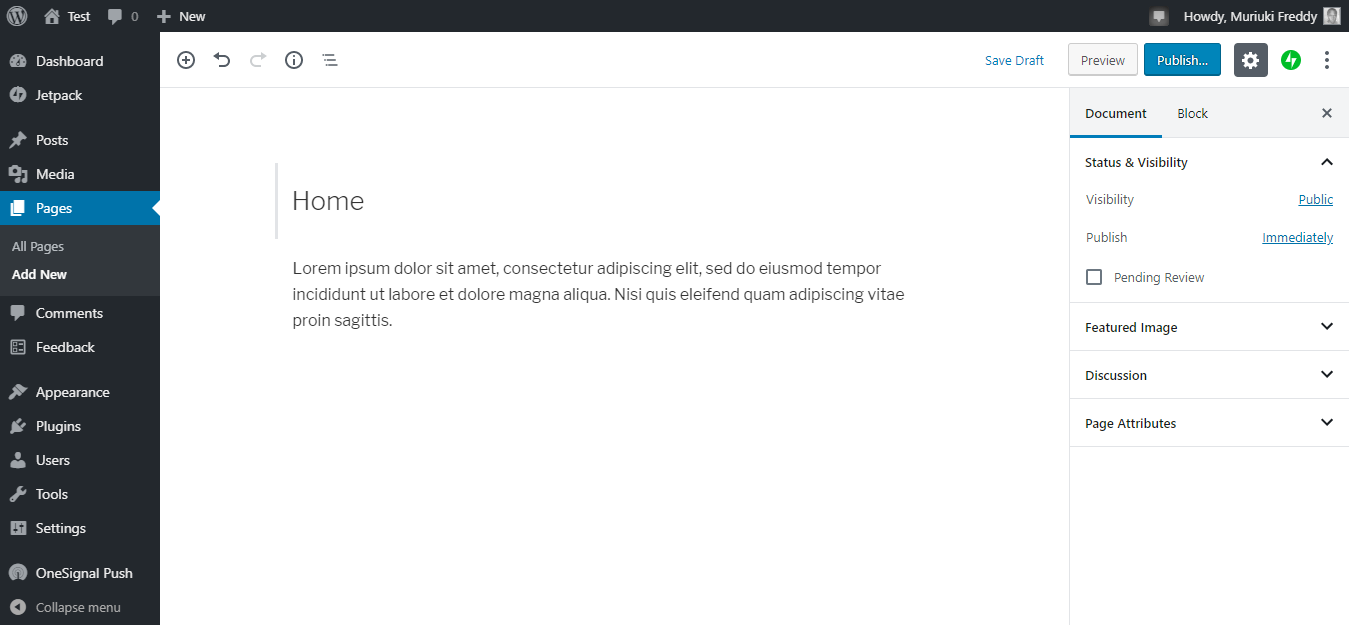
There are two ways you can add a video to your page inside the Gutenberg editor. You can inline a video or use Gutenberg’s video block.
1. Add Inline Video to WordPress
To add an inline video to your page, simply paste the YouTube URL you copied earlier in a line of its own (hit the ENTER key before pasting the URL) as we show below.
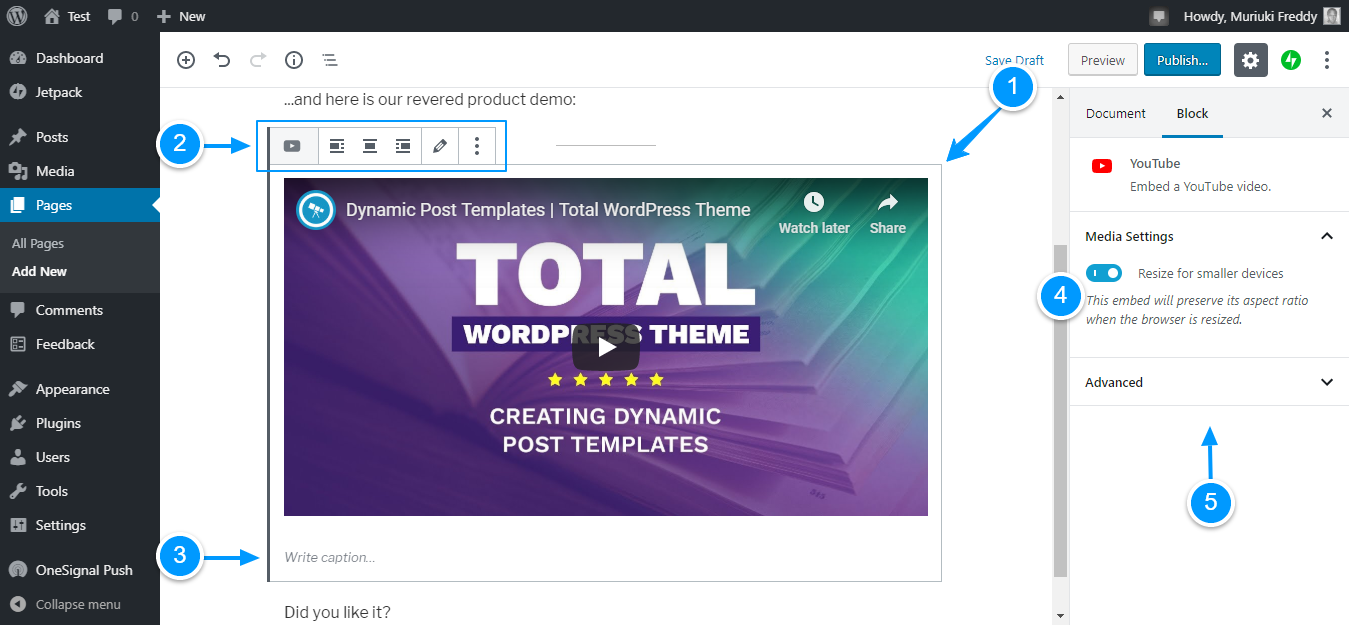
A couple of notes about the image above (the numbers correspond to the numbered list below). You can:
- not see the link we just pasted because WordPress converts the link into the video preview immediately
- align the video, edit the YouTube URL, duplicate the video, and even remove the video among other Gutenberg-specific actions
- easily add a caption here
- choose whether the video resizes for smaller devices. We recommend you leave this setting ON
- define additional CSS class, which means you can customize your video container styles, but you will need to learn CSS first, so forget that area for now
With everything in place, feel free to hit the Preview button at the top to see your new YouTube video embed in action. Here is how mine looks with the Twenty Seventeen WordPress theme.
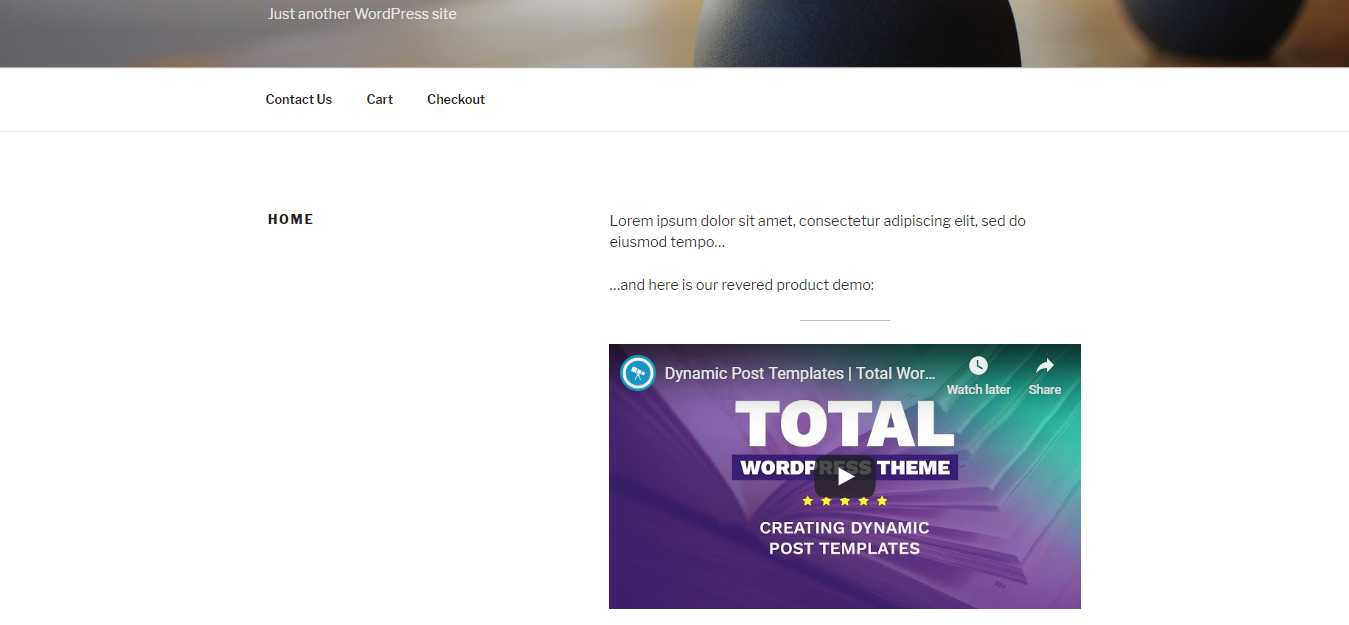
And if you’re using the Classic Editor your page will look like this:
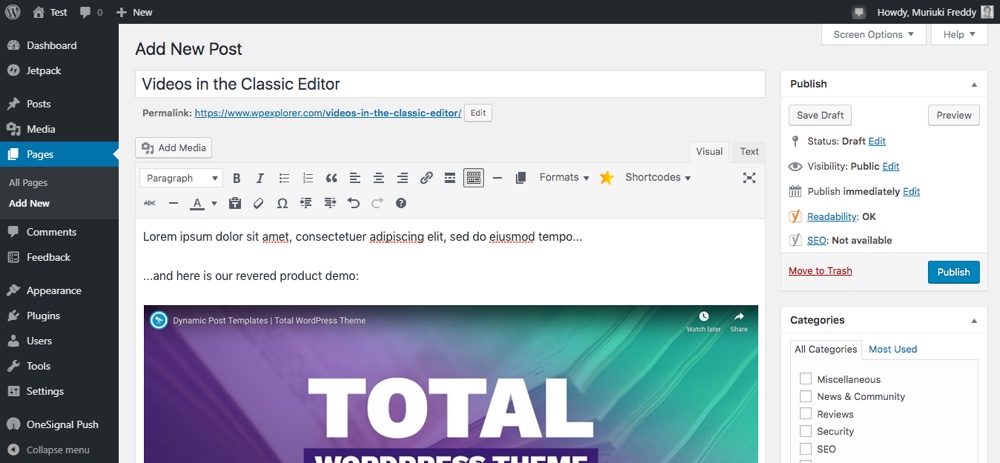
As you can see the URL will automatically fill with the video based on the link – in this case, a YouTube video. With the Classic Editor there aren’t really any options to edit the video size or alignment – it is what it is.
That was easy, right? You didn’t even break a sweat.
2. Add Videos to WordPress Using a Gutenberg Block
Adding a video using a Gutenberg block is easy as well. With your copied YouTube URL in hand, place the cursor where you’d like to place your video, and click the plus (+) sign thingy as shown below.

On the panel that opens, navigate to Common Blocks and click on the Video block as we highlight below.
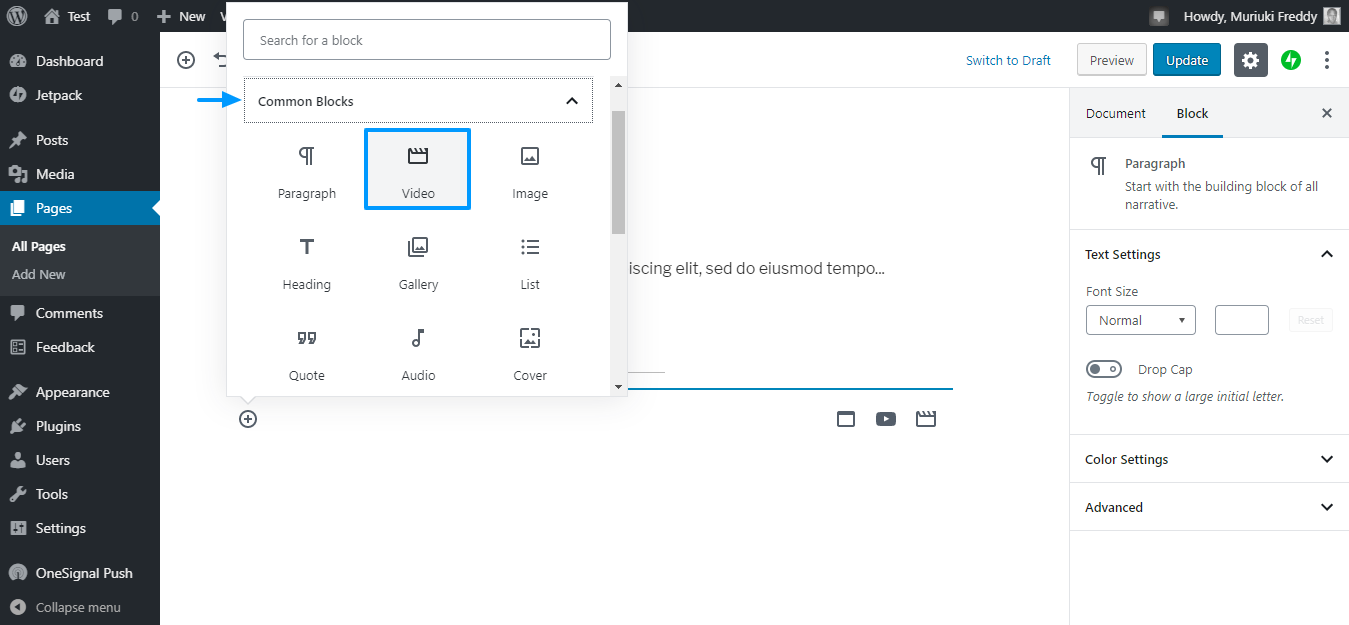
Next, click the Insert from URL button as we detail in the screengrab below.

Next, paste your YouTube video URL and hit the Apply button to add the video to your WordPress site. See image below.
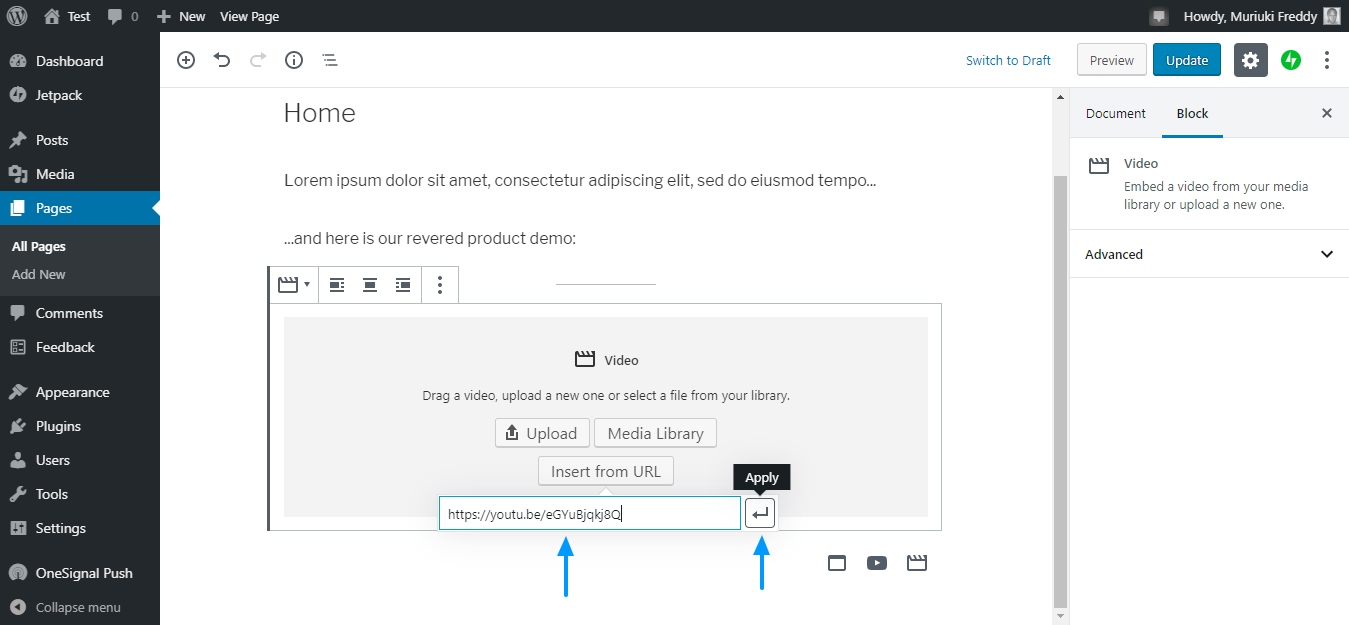
And here is what you get.

Notice anything else? Can you spot the Bold, Italicize and Link buttons at the bottom of the video preview? What do you think these buttons do?
Create the rest of your page, and hit the Publish button to publish the page/post on your WordPress site.
Point is adding videos to your WordPress site is easy peasy stuff. The above methods support a good number of video streaming sites, meaning you have adequate options to cover all of your needs.
Here a couple of the supported video sites:
- YouTube
- Tiktok
- Vimeo
- Facebook (see special requirements)
- Flickr
- Animoto
- DailyMotion
- TED Talks
- Tumblr
- WordPress TV
- And many more!
Still curious? You can learn more about supported video sites, and how to add videos from these sites in the WordPress Codex.
3. How to Add Videos to a WordPress Widget
Want your video in a sidebar or footer instead of the main page content? Well, that’s easy too. Simply navigate to Appearance > Widgets as we highlight below.

Next, choose the Text widget, and select the widget area where you’d like to place your video. For illustration purposes, I went with Blog Sidebar. Then, click the Add Widget button as shown below.

Note, depending on the theme you’re using, you can have more or different widget areas.
That aside, give your widget a title (1), paste the YouTube video URL (2), and finally hit the Save button (3) as shown below.

Now, let us see how our videos look on our test WordPress site that’s using the Twenty Sixteen theme.
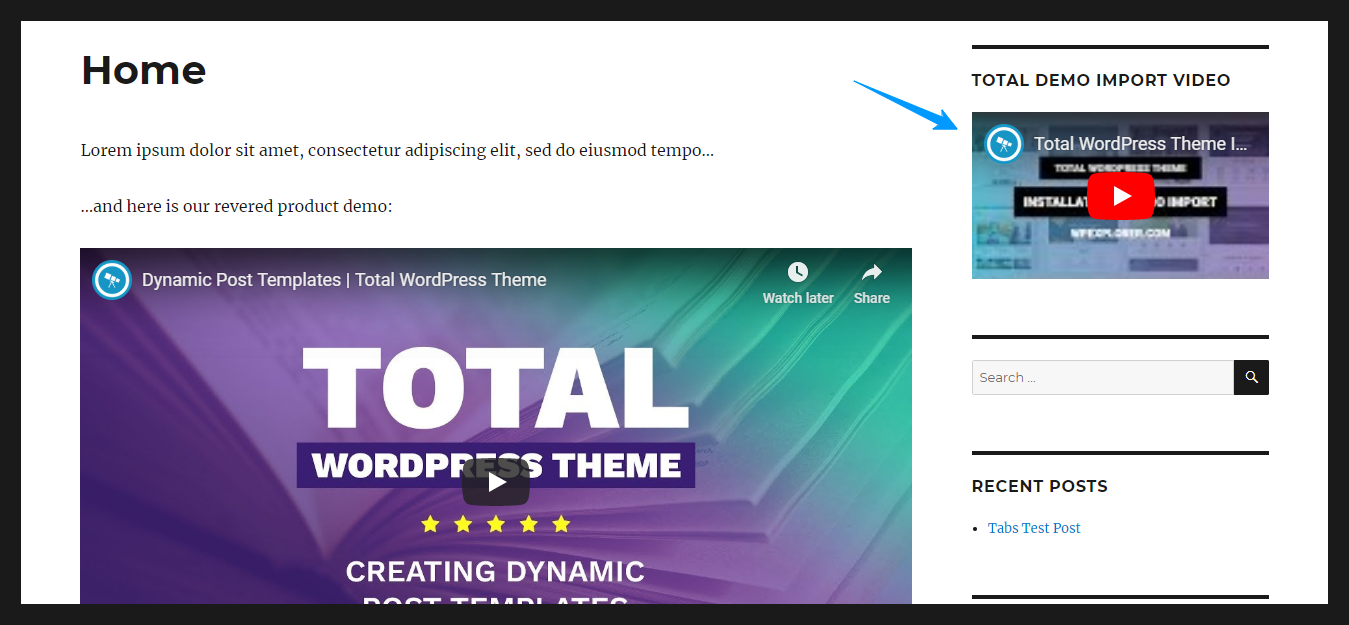
Not bad at all. Our sample site comes complete with the sidebar video!
A Note on Adding Videos to WordPress
Adding videos to your WordPress site is the stuff of fourth-graders. It’s so easy that no prior coding or technical knowledge is required.
But if you’ve noticed – our guide recommends using a third party service to host your videos. We generally advise against uploading your video files directly to your WordPress site (unless there is a specific reason, such as premium videos or courses for memberships). Why? A few reasons:
- If you’re just starting out, chances are you’re using shared web hosting, which comes with bandwidth and storage constraints despite the “unlimited everything” claim most hosts make. Storing large files on shared hosting environments can crash your website if your video gets a lot of traffic. This is why using a third party site like YouTube or a separate hosting service like muse.ai can help.
- Uploading videos directly into your WordPress website means you’re missing out on all the traffic you can get from video streaming sites e.g., YouTube, Vimeo, etc., and social media sites. Besides, backlinks from such sites can also help you to improve your search rankings, which translates to more traffic.
- You make it harder for users to discover and share your videos, which limits how far you can spread your video content. When you host videos on YouTube, for instance, users can subscribe to your channel, like videos and share your content without extra work from you. Also, they don’t necessarily need to visit your website to share video content with friends, which helps you to get your videos in front of more eyeballs.
- OH WAIT, you can also earn ad revenue from your YouTube videos, so it literally pays to create videos that have the propensity to go viral. Look at that, we just unearthed another income stream for you 🙂
However this is just our opinion. You can of course upload a video to your media library to use on your site if you really want to. But we advise making sure you have the server resources available for videos first.
Adding videos to your WordPress site is as simple as A, B, C. You don’t even need to install plugins to get videos working for you! Just choose a third party site (we like YouTube or Vimeo), and when you start creating videos, create high-quality videos that can go viral.
Are you having problems adding videos to your WordPress website? Do you have a question or concern regarding our methods? A suggestion perhaps? Did we leave out anything? Please share your thoughts in the comments. Cheers!



Great article. There is a great plugin called VideoNab that our team built to add videos to WordPress. It takes away a lot of the work and adds some really useful features to boot. Check it out: videonab.com
Looks really nice, good work Josh!
Is the theme compatible with the videostir plugin? I would like to put their videoclips on my site for calls to action.
will the videos break something?
Hmmm well I’m not sure which theme you’re referring to, but I would suggest just trying the plugin on your website. If you run into any theme/plugin compatibility issues then just email the Videostir plugin developers.
but how do i make the videos appear on the homepage?the theme uses exerpts instead of full posts, and the video’s are showing up as blank posts
You will have to contact your theme developer to help you out. For example on our Total theme we actually have exclusive fields for adding your videos so that they do display on the homepage if you want them to. A lot of themes include that so you may want to ask the developer of the theme you are using if this is something included and if not you may want to consider updating to a different theme that offers this. That said, based on your email I assume you may be using WordPress.com in which case you may want to consider moving to a self hosted WordPress.org installation so you have access to a greater theme selection.
Great information, going to try it to put a video up on my post! Thanks
You can also stream live with hapity which creates a video blog post for you. I do that and add YouTube videos as well.
Hell everyone!
first of all, thank you for the tutorial Freddy!
For me it worked for the most parts, but something still doesn’t.
I embedded three videos that are hosted on YouTube with no problem, but videos that are hosted on Facebook do not work. It just says: “Sorry, this content could not be embedded.” when I put in the Link.
Most of the videos I use are uploaded directly to Facebook by my Organisation, so I also do have the files and the possibility to upload them directly to WordPress. But as you explained yourself, it is more practical to have them hosted somewhere else.
I hope there is a solution for that! Thank you in advance:)
Pablo
Ah yes – Facebook closed the general oembed end point, so now you must have a Facebook dev account and create an appid to embed links (here’s a WordPress’ explanation).